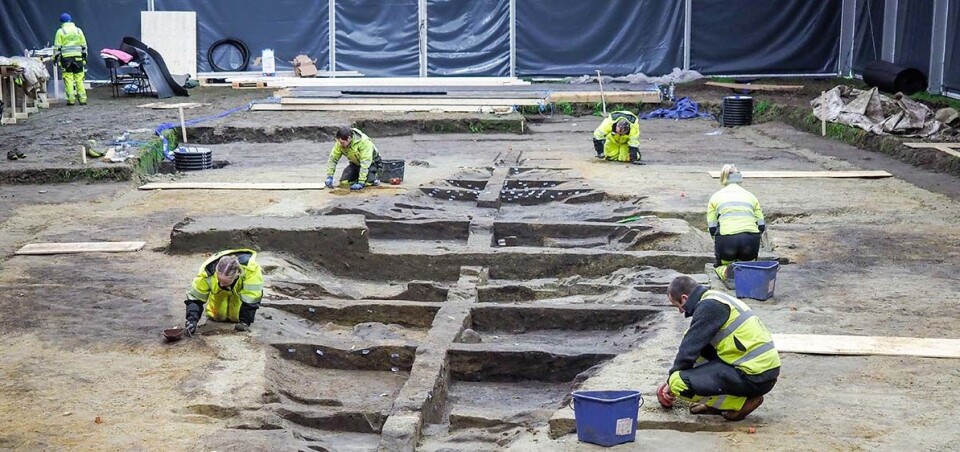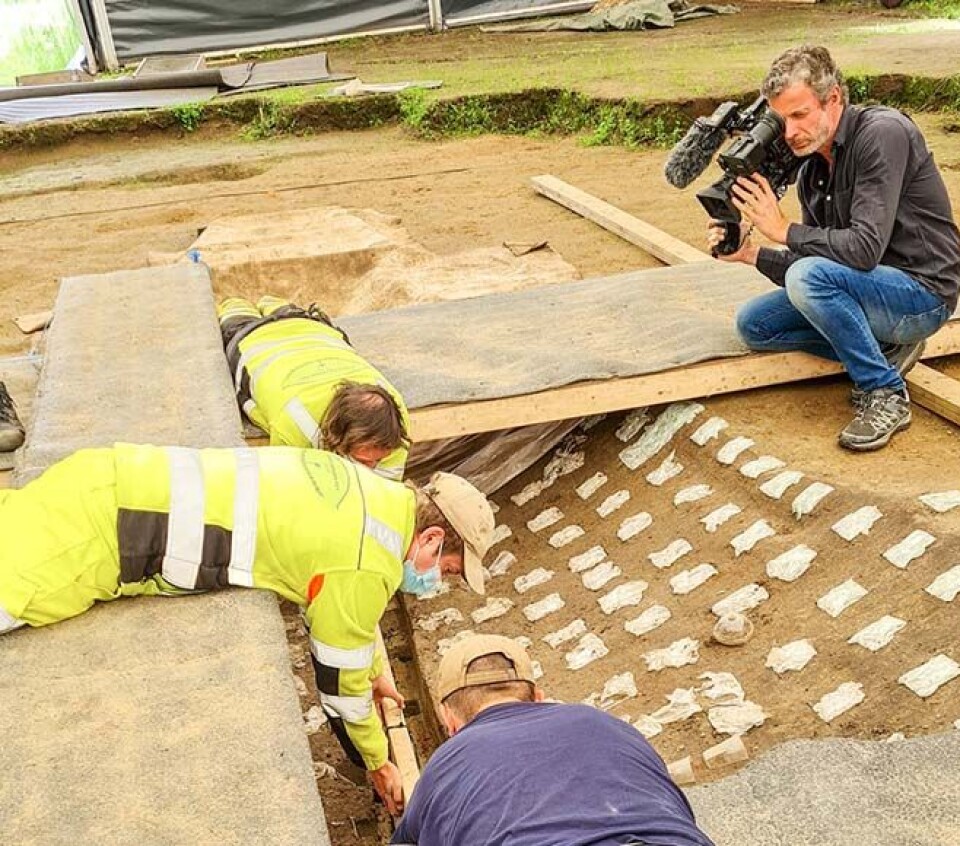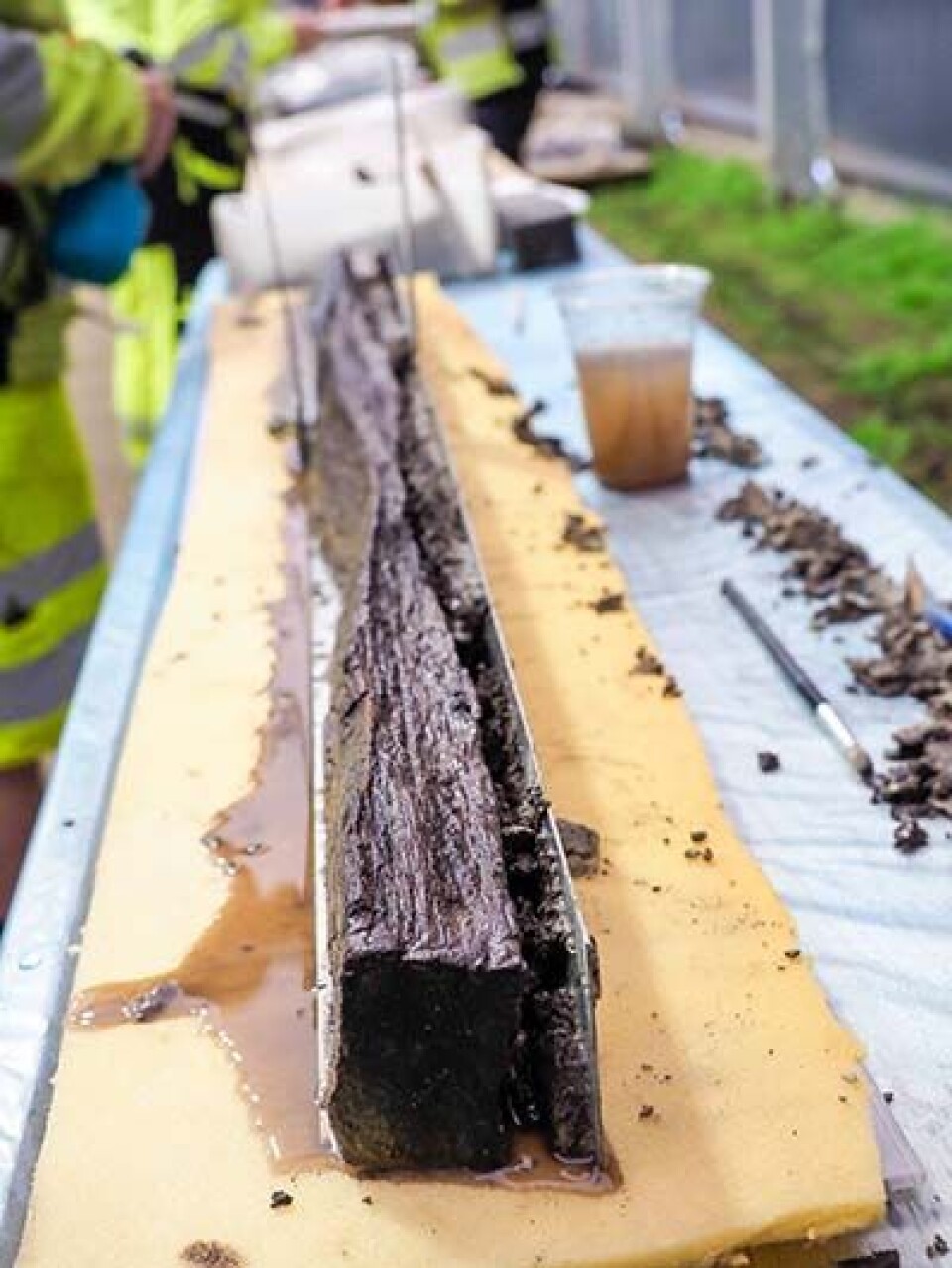THIS CONTENT IS BROUGHT TO YOU BY University of Oslo - read more

A digital reconstruction of the Gjellestad Viking ship will be complete within the next year
Experts are currently digitising the 1,400 rivets that were removed from the Viking ship.
The excavation of the Gjellestad ship was the first of its kind in Norway in more than 100 years. It was completed in the autumn of 2021.
“The part of the ship that’s preserved was just over 19 metres long and a little more than four metres wide. We probably have to add one or two metres to the length since the soil was ploughed, which means that the majority of the two stems are missing,” Christian Løchsen Rødsrud says.
He is an archaeologist at the Museum of Cultural History, which the Viking Age Museum is part of, and the project manager for the excavation at Gjellestad.
CT-scanning all the rivets
When the excavation was completed, the archaeologists were left with around 8,000 finds and fragments they had extracted from the site, including almost 1,400 rivets.
Now, the painstaking work of CT-scanning all the rivets is well underway.
Together with other digital documentation made during the excavation, the team will be able to recreate an almost exact, digital reconstruction of the Viking ship.

Reconstructing the ship
“This is not just important in a Norwegian context, but also across Scandinavia and in the areas where the same ship technology was in use," Rødsrud says.
Such a digital reconstruction of the Gjellestad ship will provide unique and broader knowledge about shipbuilding traditions in the Viking Age.
The basis is therefore a new ship that will most likely have different technological solutions and thus also different properties and qualities than the ships we know from previous excavations, according to Rødsrud.
“We scan an average of nine rivets a day, so it takes time. But we will probably have a complete model of the ship within the next year," he says.

The rivets are severely decomposed and are still in the blocks of soil that were extracted from the ship. The blocks have been preserved with a silicate-based consolidation agent that holds the soil together, with the rivet inside.
This preserves the rivet exactly as it was in the imprint of the ship, which makes it possible to handle them. With this method, the rivets can be put back where they were found, for instance if the plans for building a visitor centre at Gjellestad are realised.
Keel for conservation
Unfortunately, not much of the wood from the ship was preserved. This is due to more than a century of modern agricultural activity after the protective burial mound was removed, as well as the creation of a drainage ditch which lowered the groundwater, resulting in oxygen accelerating the decomposition process.
However, it was cause for celebration when the archaeologists were able to extract parts of the ship's keel. This was also very degraded, and working on how best to preserve the keel has been exciting for the conservators.
The keel has now been placed in a water bath with polyethylene glycol (PEG), a water-soluble wax.
"When it has absorbed a sufficient amount of the solution, and is then freeze-dried, we can exhibit it if we wish. But it will be another year or two before it is ready for exhibition," conservator Ruben With at the Museum of Cultural History says.
Probably from the year 780
The probable dating of the Gjellestad grave is 800-850 AD.
“It is possible that we can date the burial all the way back to 780 AD, because some of the bead types that were found in the grave began to circulate in Scandinavia around that time,” Rødsrud says.

This content is paid for and presented by the University of Oslo
This content is created by the University of Oslo's communication staff, who use this platform to communicate science and share results from research with the public. The University of Oslo is one of more than 80 owners of ScienceNorway.no. Read more here.
More content from the University of Oslo:
-
How international standards are transforming the world
-
A researcher has listened to 480 versions of Hitler's favourite music. This is what he found
-
Researcher: "AI weakens our judgement"
-
New, worrying trend among incels, according to researcher
-
Ship’s logs have shaped our understanding of the sea
-
New study: The dilemma of copyright in the Global South




































